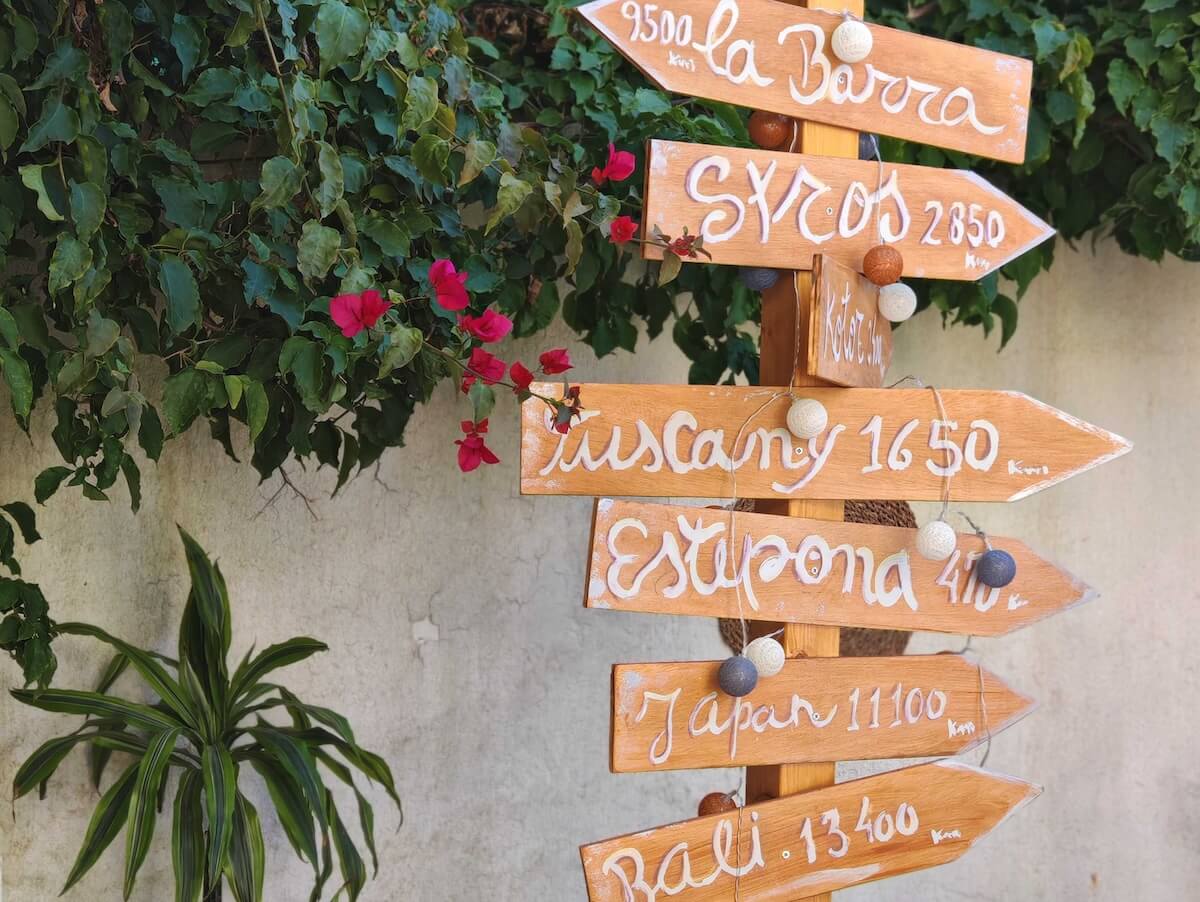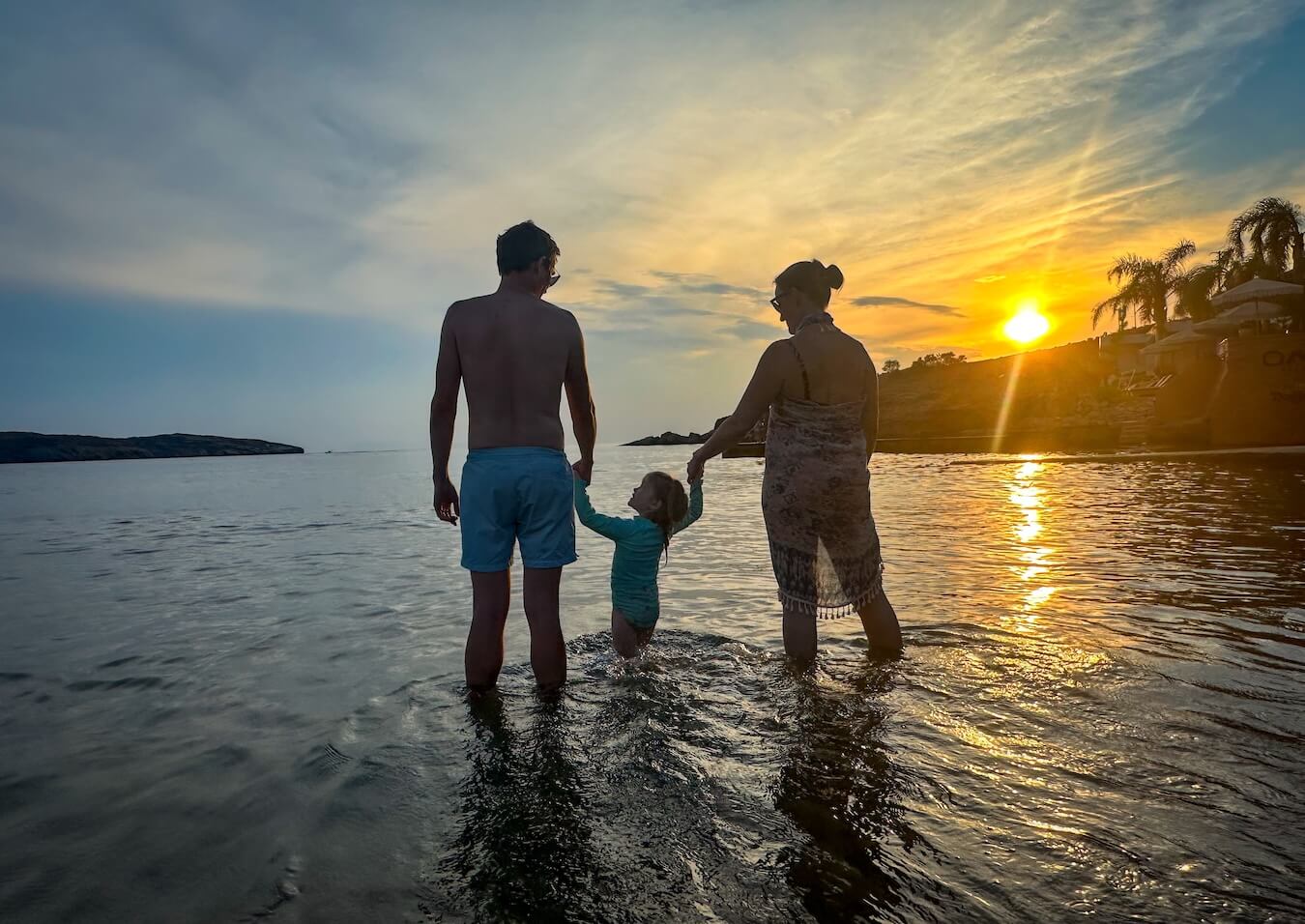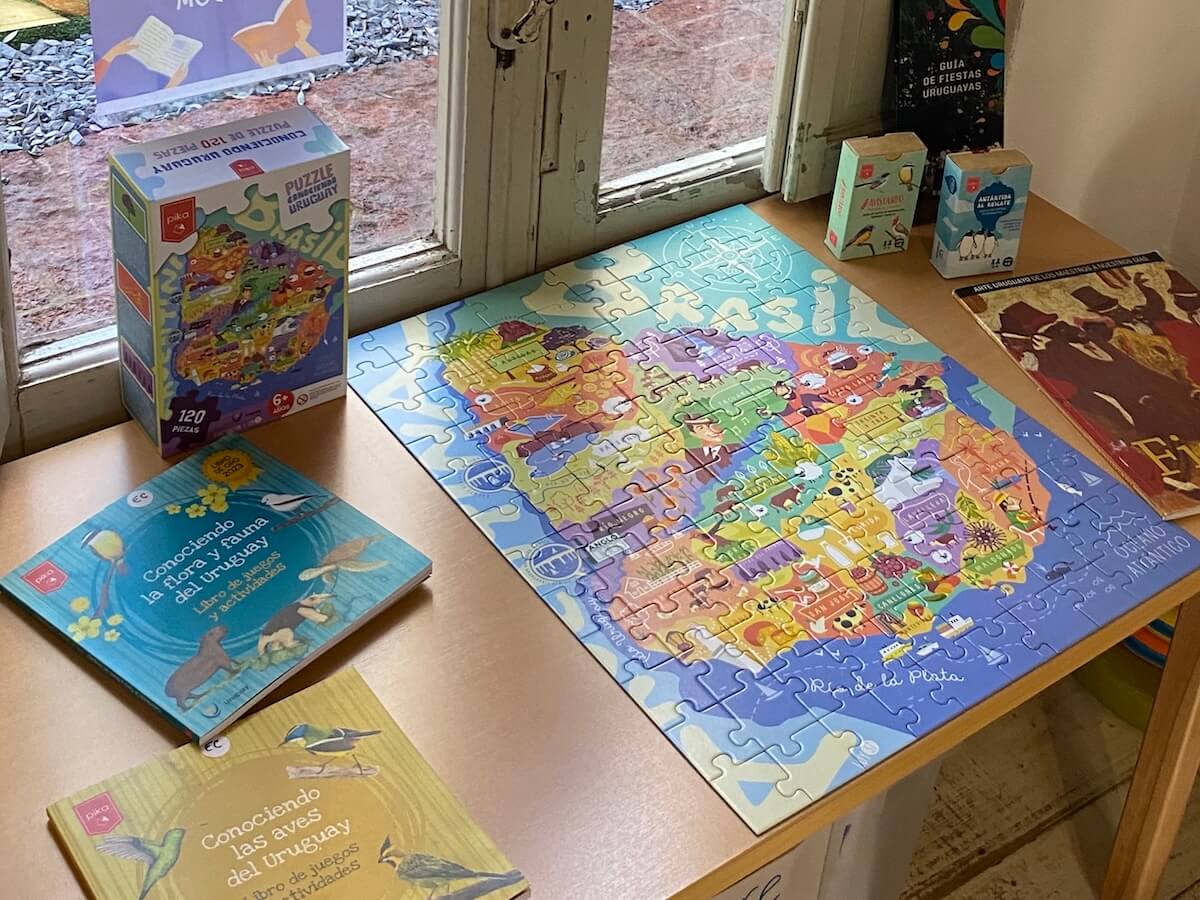
🤔 Ever considered taking a gap year or family sabbatical? It’s an extremely big decision and one that can be potentially life-changing.
Some of the benefits of taking a gap year include, the chance to pause the grind, quality time with the family, exploring the world, and even reflecting on your career or personal path.
But taking a year off with your family also raises big questions.
- Why take a sabbatical now?
- What do you want out of it?
- How can you afford it?
In this guide, we’ll walk you through the planning and budgeting process step by step, with expert insights from sabbatical coach Lyndall Farley – a woman who’s taken 12 sabbaticals (yes 12!) and has gone on to help countless others plan theirs.
Lyndall Farley (founder of Beyond a Break) shared her wisdom in a recent interview, and we’ve pulled her best tips, quotes, and strategies to help you map out your own family gap year.
From defining the purpose of your sabbatical, to shifting your mindset about money, to structuring a child-friendly travel plan and crunching the costs, we’ve got you covered. We’ll also highlight tools and creative funding ideas that can make a sabbatical more attainable than you might think.

1. Start with “Why”: Defining the Purpose of Your Sabbatical
The first step is to understand the why and what you hope to get out of taking a gap year. It’s tempting to jump directly into planning out travel itineraries, but Lyndall emphasizes the need to first step back and clarify your sabbatical’s core purpose before you decide on the big stuff, like where to go or what to do.
Ask yourself and your family:
- Why now? – What’s prompting you to take a break at this point in your life?
- What do we need most? – Is it a recharge, an adventure, the desire to learn something new, quality time with your children, or all of the above?
- What outcomes do we want? – Do you hope to return with a new career direction, closer family bonds, or simply a lifetime of memories?
Lyndall encourages sabbatical planners to start with these questions. She warns that many people make the mistake of immediately plotting out travel activities without considering the bigger picture.
For example, Lyndall recalls the eighth sabbatical which she took with a clear purpose after feeling burnt out from her corporate job. During that time, she gained the clarity and confidence to make a major life change – leaving corporate employment to start her own business. It was an intentional break designed to reset and realign.
Identify what you and your family truly need from your sabbatical year. Your goal might be as straightforward as “spend more time with the kids while they’re young” or as broad as “figure out what comes next in life.” There are no wrong answers, but having a guiding purpose will help shape all your plans. Lyndall notes that people often get stuck at this step, so she shares a sabbatical planning tool to help through this process.
“People often go straight into, ‘Where am I going to go and what am I going to do?’ and they don’t think about ‘What is the bigger purpose here? What is most important?’ ... Actually what they might need is to recharge, or heal, or just have some stillness, or spend time with family. Think about the intention first.” – Lyndall Farley

2. Shifting from Saving to Spending: Embrace “De-Accumulation”
One of the hardest mental adjustments for first-time sabbatical-takers is moving from a saving mindset to a spending mindset. As working adults, we’re conditioned to save money diligently. Suddenly deciding to live off your savings for a year, can trigger guilt and anxiety.
To overcome this guilt, it helps to reframe what money is really for. Lyndall’s advice is pivotal – “There are periods of your life that are meant for de-accumulation. They are meant for spending. And you have to change the mindset and enjoy the spending – because what did you save for in the first place?”
Ultimately, money is a tool to facilitate life, not an end in itself. Once your basic financial security is covered, holding onto extra savings for no clear purpose isn’t inherently virtuous – it’s just habit.
If you’ve been responsible enough to amass a nest egg, allow yourself to invest some of it in life experiences for you and your family. A sabbatical, or a gap year, is a prime example of spending for something meaningful. Rather than viewing your break as an indulgence or a “frivolous” splurge, reframe it as an investment in your family’s growth, well-being, and memories.
By adopting a de-accumulation mindset, you’ll start to see your savings as a means to a more fulfilling life. And if part of your savings goes towards an unforgettable family sabbatical, that could be the best money you ever spent.

3. Planning: Balance Rest, Travel, Education, and Enrichment
Planning a sabbatical year for a family comes with extra layers of complexity. You’re not just coordinating your own break, but also your children’s lives – their schooling, routines, and well-being. How do you structure a year away so that everyone thrives? The key is to find a balance between adventure and rest, between new experiences and comforting routines.
Slow Travel Saves Sanity & Money
One big lesson from veteran traveling families is you can’t do it all. With kids in tow, a hectic travel pace can lead to burnout and crankiness for everyone. Instead, consider a “slow travel” approach, spending longer in each location, establishing temporary home-bases, and leaving plenty of downtime.
This gives everyone a chance to rest, play, and absorb the new environment without constant packing and transit. As Lyndall notes, slow travel can actually be more relaxing and budget-friendly.
“Fast travel can be expensive, but slow travel – particularly in economies cheaper than the one you live in – you can literally live for a lot less money... people just don’t realize how cheaply you can live in a lot of places”.
In other words, slower travel not only reduces stress, it can reduce costs.

Plan for Education and Enrichment
If your children are school-aged, you’ll need a strategy for their learning during the year. Options might include homeschooling or worldschooling, enrolling them in an online school, or signing them up in local schools programs where you travel.
Joining a program such as Boundless Life, which Lyndall herself has experienced, is a great hassle-free option. It gives families the opportunity to hit the ground running on arrival and live like a local for a month or more in different international locations with built-in support. Lyndall puts it like this, “children go to school, parents have access to a co-working hub, and everyone lives in walkable neighbourhoods designed to make connection easy”.
Basically Boundless Life offers a ready-made community of traveling families and a curriculum for children, which can take a huge weight off parents’ shoulders.
Include Family & Personal “Projects”
Think about activities that each family member might want to pursue during the break. Perhaps you’ve always wanted to get a yoga teacher certification, or your partner wants to take a cooking course in Italy, or your child might want to learn surfing.
A gap year can be a time to pick up new skills or hobbies together. It could be as structured as enrolling in courses or workshops, or as informal as deciding to spend a month volunteering or joining a work exchange.
Having a mix of activities – some purely restful, some educational, some adventurous – will keep the year balanced. Just guard against overloading your schedule and leave room for spontaneity and relaxation.

Be Flexible & Family-Centric
Above all, design your sabbatical rhythm around what will keep your family happy and healthy. Young kids might need a regular nap time even if you’re in a new city. Teens might crave social interaction with peers along the way. You may discover everyone needs a “lazy week” where you do nothing but hang out. That’s okay!
In fact, Lyndall writes about the value of JOMO – the “joy of missing out.” On her Boundless Life stay, she learned not to attend every group activity or excursion, skipping some events gave her family more energy for what mattered to them.
You can apply the same principle: don’t feel pressured to constantly be on the move or checking off sights. Give yourselves permission to slow down, recharge, and simply be present. The magic of a sabbatical often lies in those unplanned moments.
In summary, a well-structured family sabbatical finds a sweet spot between adventure and ease. Blend travel with routine, education with exploration. When in doubt, err on the side of less is more, fewer transitions, more quality time.

4. Planning Your Sabbatical Budget: A Step-by-Step Guide
Once you have a vision for what you want to do on your sabbatical, it’s time to tackle the numbers. Budget planning may not be the most glamorous part of a dream year, but it’s a fundamental step.
Here’s the good news! Lyndall has developed a handy tool – the Sabbatical Cost Calculator – that walks people through this process step by step.
Step 1: Outline Your Sabbatical Plan & Timeline
Start by sketching out the key components of your year: Where do you intend to be and for how long? For instance, your outline might be: 3 months in Asia, 3 months living in Europe. Or perhaps 6 months slow-traveling through South America.
You don’t need every detail, but you do need a rough itinerary and duration. This forms the backbone for estimating costs. Be sure to include non-travel periods – if part of your sabbatical is spent at home or staying put in one place, note that too.
Step 2: Estimate Travel & Living Costs for Your Time Away
For each phase that you’ll be traveling or living outside your home base, research the cost of living and travel expenses in those locations.
A great tip from Lyndall is to use online resources to get ballpark figures. She recommends tools like –
- BudgetYourTrip – provides average daily travel costs for various countries at different budget levels.
- The Earth Awaits – a cost-of-living calculator for cities around the world.
These can give you a sense of whether a place costs $50/day or $150/day, and what rent, groceries, transportation, etc. might total per month. These insights can help you prepare and adjust your plans accordingly.
For each travel segment of your plan, calculate an estimated monthly or daily cost. Include accommodation, food, local transport, activities, and any schooling or childcare costs. Then multiply by the number of months.
Lyndall’s calculator splits costs into “short-term travel” and “long-term living” because their cost profiles differ.

Step 3: List One-Off Costs & Gear Up
Next, brainstorm all the one-time expenses required to launch and sustain your sabbatical. These might include international flights, travel insurance, visas and vaccinations, any new gear or luggage you need, and program fees. For example, if you’re joining something like Boundless Life or enrolling in a course or camp.
Step 4: Tally Your Ongoing Back-Home Expenses
Even while you’re on sabbatical, some of your regular bills back home may continue. Do you have a mortgage or rent that will still be due? What about utility bills, car payments, insurance premiums or storage unit fees?
Make a list of any fixed costs at home that won’t disappear during your break. In some cases, you might be able to reduce or pause these costs. Once you’ve listed your home-base costs for the year, add those to the budget. This gives you the total amount you’ll need to cover both your travel life and any life back home.
At this point, you effectively have the “cost of your sabbatical” calculated – the sum of all travel living costs, one-off expenses, and ongoing home expenses for the year. Next it’s time to figure out how to pay for it.

Step 5: Assess Your Available Funds & Savings
Take stock of the financial resources you can draw on. This starts with simple savings: what money do you have in savings accounts or set aside that could be used for your sabbatical?
It might be money earmarked for a different goal, but if a sabbatical has become your priority, consider reallocating some of it. If you’ve been saving specifically for a sabbatical, great – note that amount.
Also think about income or benefits you’ll receive during the sabbatical. Will your employer provide any sabbatical pay, can you use paid leave, maybe unused vacation days you can cash out.
Step 6: Identify Creative Funding Sources
Beyond your cash savings, what assets or resources could you leverage? Lyndall’s approach is to “spark all of the ideas about how you can leverage all of the different things at your disposal to make space for a break”. Consider things like:
- Renting out your home while you’re away
- Selling or renting vehicles and other property
- Liquidating investments or shares
- Downsizing and selling stuff
List out all the potential sources and assign rough dollar amounts to what you could get from each (even if it’s $0 for some). When you add up your dedicated savings plus these extra sources, how does it compare to the sabbatical cost total from Step 4?
👉 Read our blog on how to finance travel with remote work and income streams.

Step 7: Crunch the Gap – & Adjust “the dials”
Now, compare total funds vs. total costs. Don’t panic if the gap is large at first glance; this is where you can start tweaking your plan or finding ways to either reduce costs or increase funds until it balances.
Lyndall likens this process to fiddling with dials – keep on fiddling with the dials until you get it to a way that you can afford it –
- “What am I going to do?
- How much time am I going to be away from work?
- What are the cost of these activities?
For instance, if the budget is too high, you might dial down the time, the activities, or choose more budget-friendly destinations. On the funds side, you might decide to ramp up your saving for another six months before departure, or plan to do a bit of consulting work mid-sabbatical to earn money.
The Sabbatical Cost Calculator essentially helps you play with these variables. It “keeps on balancing” the cost side and funding side so you can see what combination makes the sabbatical viable.
Step 8: Prepare a Contingency Buffer
Finally, once you’ve got a plan that balances out, build in a safety margin. It’s wise to have an emergency fund or extra cushion beyond what you expect to spend, in case of unforeseen expenses or cost overruns.
By following these steps, you’ll transform the intimidating question of “Can we afford a year off?” into a concrete plan with real numbers.

5. Funding Your Sabbatical: Tips to Make It Affordable
The way you travel will greatly affect how much money you need. You can significantly cut costs by opting for budget accommodations (house-sitting, home exchanges, short-term apartment rentals instead of hotels), cooking your own meals often, using public transportation, and seeking out free or low-cost activities (parks, museums on free days, community events).
Many traveling families get savvy with points and miles too – using travel reward credit cards beforehand to earn points that pay for flights or lodging. Essentially, stretch your dollar without sacrificing experiences. A cheaper sabbatical is no less memorable – in fact, slow and simple experiences often are more meaningful. Plus, every dollar saved is one less you have to fund.
You might discover that your sabbatical can partly fund itself. Lyndall shares that one of her own sabbaticals ended up costing her nothing, “my sabbatical number nine was break-even. I didn’t spend any of my savings” she says. For three months in Bali, she covered all expenses with creative funding – renting out her home, doing a bit of coaching work, and choosing an affordable location. While a fully break-even sabbatical is an ambitious goal, it’s amazing to know it’s possible.
The takeaway message is be resourceful and open-minded about money. Lyndall’s approach as a coach is to empower people in exactly this way. Her calculator and coaching don’t magically hand you cash, but they spark ideas, surface resources you forgot you had, and help you see options.

6. Tapping into Support & Community: Boundless Life & BreakSpace
As you plan your sabbatical, remember that you don’t have to do it all alone. There are communities and platforms designed to support families on this journey.
Of course you have Boundless Life community and team as a practical framework for family sabbaticals. Boundless Life sets you up in a family-friendly location with accommodations, an Education Center for children, and a co-working space for parents, alongside other like-minded families. It basically takes care of the biggest logistics (housing, schooling, community) so you can immerse yourself in the experience. If the idea of landing in a foreign country with children and figuring everything out sounds intimidating, a month or a few months with Boundless Life can provide a soft landing and a built-in support network.
Another resource to keep on your radar is BreakSpace – Lyndall Farley’s own membership community for people taking sabbaticals and career breaks. BreakSpace provides expert guidance, courses, and a network of peers “walking the same path” of extended time off. It’s designed to help you from the moment you’re considering a break through the re-entry after your sabbatical.
Being part of a community like this can keep you motivated and informed. Members swap tips on everything from budgeting hacks to destination ideas. Sabbatical planning can feel like a big leap into the unknown – but when you’re surrounded by people who “get it,” that leap feels much more doable.

Your Sabbatical Story Begins Now
Taking a family sabbatical year is a bold move – one that requires planning, courage, and a leap of faith. But through these practical steps and expert insights, it’s a journey that can be planned and budgeted for through intention and creative strategies.
A well-planned gap year can change the entire course of your life or career for the better. So go ahead – dare to plan that family gap year. Use this guide as your roadmap, and the wisdom of those who’ve done it before you as reassurance that you can do it too.
Bon voyage and happy planning! Your sabbatical story is waiting to be written – make it a great one.
👉 Got Gap Year Fears? Read this article for 5 common fears and how to beat them.





.avif)
